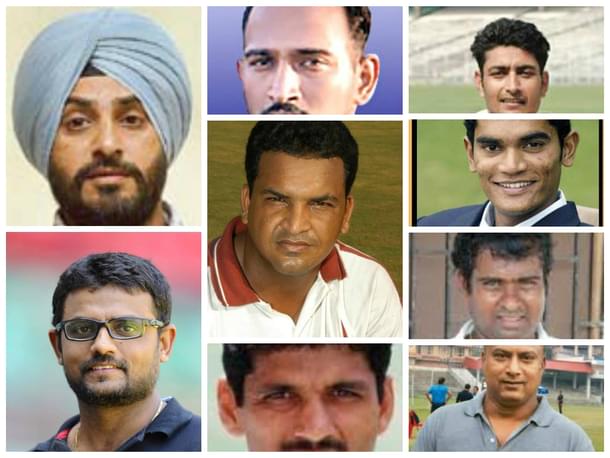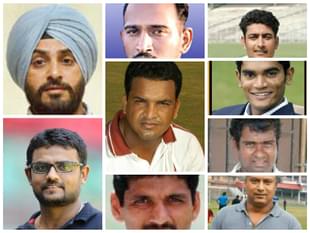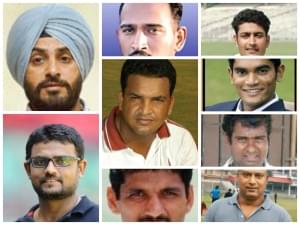Featured
An Unlikely Indian ODI Cricket Team
Aashish Chandorkar
Nov 13, 2014, 04:52 PM | Updated Feb 22, 2016, 04:58 PM IST
Save & read from anywhere!
Bookmark stories for easy access on any device or the Swarajya app.


What about an “India Post 1990 Best Underperforming ODI XI”? Where everyone selects (or drops, depending on how you look at it) themselves on ‘merit’ automatically? A Dream Team that every opposition would love to play.
Cricket is a game full of tradition and nuances. One such nuance is the urge which the fans constantly feel to create their favorite XI. Across combination of countries and formats, almost every cricket fan has dabbled in putting on the selector hat at some point of time. Given the passion which goes in these exercises, which get endlessly debated on social media, it is a surprise that no computer whizkid has simulated a “Best Test XI” vs. “Best One Tip One Hand XI from Velachery” in a fictional game as yet.
Test cricket has a long history, and has been subjected to several drastic changes of playing conditions, which make comparisons across eras difficult. T20 is too new and the greatness or otherwise in the format, assuming the discerning fan cares to recognize it as a cricketing format, is still debatable. One Day Internationals (ODIs) present a good 45 year range, most of which was televised, to cricket best XIs.
In the Indian context, the post Tendulkar era brought a seriousness to the format, though the team made significant winning stride in the decade of 1980s. If one were to make a post 1990 Best Indian ODI XI, the debate won’t go beyond 2-3 names – everyone will select themselves – the pecking order has been so clearly established.
But what about an “India Post 1990 Best Underperforming ODI XI”? Where everyone selects (or drops, depending on how you look at it) themselves on ‘merit’ automatically? A Dream Team that every opposition would love to play. Names which whizzed past faster than Ravi Shastri could invoke the tracer bullet analogy. Here’s an attempt.
Ground rules:
- No current players or players with a chance to play for India again in ODIs are included.
- No players who debuted before 1990 are included, however poor their post 1990 record was. Or else Kapil Dev would have to be the natural leader of the team.
- An underperforming team will have to adhere to the formula of building a lopsided team with 6 batsmen / 1 wicket keeper / 1 all rounder / 3 bowlers.
Sujith Somasunder
His international career lasted 5 days with games against cracking ODI sides Australia and South Africa. In one game, it took the genius of Glen McGrath to rid him of his misery top of the order. In the other, it took a hard earned run out to reduce guilt perception after SRT was dismissed at the other end trying to score for two batsmen alone.
Devang Gandhi
One has to be classified as an exciting player when one scores 65% of career runs in boundaries. Incidental if the career run-count was only 49, of which 32 came in fours. Add to that the ultimate tribute – SRT replacing you in your previous batting position. Incidental again that it was because of your poor strike rate as an opener (and SRT scoring a duck in the middle order).
Sridharan Sriram
He played 8 matches in 2 different years, 4 years apart, against 4 different teams batting at 5 different positions. In the first year, he spent about an hour on the crease scoring 21 runs. In the second year, he scored 60 more including a career best half century in his 8th and last game. He was promptly dropped after that. His was the typical 90s story and by corollary, an ideal number 3 batsman in this team.
Atul Bedade
He was the new Sachin, when the original was yet to be completely discovered. He was India’s answer to Mark Greatbatch, when the question itself was fading. He was supposed to be the destroyer of Pakistan bowling in Sharjah, which on a fleeting occasion he was, when Wasim Akram and Aaqib Javed were between spell breaks. If Indian cricket team were a movie, he debuted with a lead role and ended with playing the pitiable simpleton bashed by every villain. All in a period of 7 months.
Jacob Martin
For someone selected to plug middle order woes, which was prone to several changes in the 2 year period he playerd, Martin came out without much distinction. 10 games, 8 innings, 4 oppositions and 3 countries produced no half centuries with a sub 25 batting average and sub 50 strike rate. Exactly the kind of record, which would slow down things when the team needs acceleration and anchor.
Amey Khurasia
Khurasia was like Suresh Raina – unable to play certain type of balls. With one key difference – his ‘unplayability’ range spanned most of the legitimate type of cricket bowling. His career was the opposite of S Sriram. He debuted with a half century, his only one, which helped further picks along the way. But when your scores in Sri Lanka are 17 (Galle), 29 (Colombo RPS), 12 (Colombo SSC), 12 (Colombo RPS) and 0 (Colombo 0), there is a problem. Any Raina ‘lookalike’ should bat at 6.

Jaiprakash Yadav
In the 2000s, England tried to build the whole ODI squad with players who could do multiple things, without doing anything very well. So India could be excused for trying out a handful of such players, with pretty much the same results – a general failure on the part of these allrounders. His best batting came in a game when India were 8 down for 44 chasing 215. His best bowling came dismissing the opposition number 8 and 9. All in all, he filled no voids – neither with bat nor with the ball.
Deep Dasgupta (wk)
His 2 week long international career entirely unfolded in South Africa. Even in the 5 games he played where he only batted 4 times, he managed to open once – as was customary to do for all Indian wicketkeepers until Dhoni arrived on the scene. He had a marginally better test career, but never fitted the Indian ODI plans after this one series.
Bhupinder Singh Sr.
He debuted with 3 for 34, which by any standards would be considered a good ODI performance. Just 2 days later, he conceded 44 off 7 versus Pakistan. And that was the end of his career. In the same game where he went for 6.28 an over, the senior bowler Srinath went for 6.21 in a longer spell. The doors revolved for him at an unprecedented speed.
Avishkar Salvi
He was supposed to be the Indian Glen McGrath. He had a dream run in 2002-03 where he went from being a Mumbai irregular to Indian pace spearhead. He got stick only in one of the four matches he bowled in. But then he missed a few games from injury. And that one game proved to be his last game. India never got a McGrath.
Rahul Sanghvi
His 9 month long career bowling on several spin friendly and / or slow pitches did not result in much joy for him. His conventional left arm spin only produced 10 wickets in as many games, one of which was the iconic April 24, 1998 Sharjah game. A nothing career with a bowling average of 40 meant he was left out of the team swiftly.
12th Man: Noel David
“Noel who?” Neither SRT, nor the average Indian fan could get a satisfactory answer to that question in late 90s. Ideal fit for this team.
If cricket is a religion, none of these players would usually be Gods. If any of them played a loose shot and Abdul Razzaq failed to catch it, Wasim Akram would not say “tu jaanta nahi tune kiska catch chhoda hai”. On the off side, there was Ganguly, then God and then a whole population of the size of Australia or Karnataka before any of these could be ranked.
Several of these careers overlapped playing for India – just goes to show how out of depth our bench strength was for a decade and half starting in the 90s. That this team never played as is for India is where we can count our blessings.
Aashish Chandorkar is Counsellor at the Permanent Mission of India to the World Trade Organization in Geneva. He took up this role in September 2021. He writes on public policy in his personal capacity.





